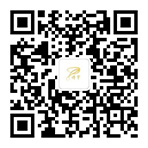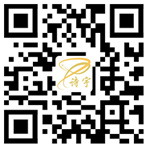1. Basic knowledge of circuit - circuit
Circuit --- refers to a conductive circuit composed of metal wires and electrical and electronic components, which is called a circuit. The circuit through which direct current passes is called "direct current circuit"; The circuit through which alternating current passes is called "alternating current circuit".
Composition of the circuit --- the circuit consists of four parts: power supply, load, connecting wire and auxiliary equipment. A device that provides electrical energy. The function of the power supply is to convert non electric energy into electric energy. Load all kinds of equipment that use electric energy in the circuit are collectively referred to as load. The function of the load is to convert electric energy into other forms of energy. Wire connection wire is used to connect the power supply, load and other auxiliary equipment into a closed loop, which plays the role of transmitting electric energy. Auxiliary equipment is used to control, distribute, protect and measure the circuit.
Function of circuit --- realize the transmission, distribution and conversion of electric energy; Realize signal transmission and processing.
Circuit model -- in circuit analysis, in order to facilitate the analysis and research of actual electrical devices, it is usually necessary to model the actual circuit under certain conditions, that is, the abstract ideal circuit elements and their combinations are used to approximately replace the actual devices, so as to form the circuit model corresponding to the actual circuit.
The main physical quantities in the circuit are current, voltage and electromotive force
2. Basic knowledge of circuit - current
Current -- refers to the amount of charge passing through the cross section of a conductor in unit time. The magnitude of the current is called the current intensity, which refers to the amount of charge passing through a certain section of the conductor in unit time. Current is divided into DC and ac. the direction of current that does not change with time is called DC, and the size and direction of current that changes with time is called AC.
Current unit and conversion -- the unit is ampere, referred to as "a" and the symbol "a".
1A= mA= uA= nA= pA
Current is a physical quantity with direction. It is not enough to only point out the size. It is stipulated that the moving direction of positive charge is the real direction of current. When writing circuit equations, the positive and negative of voltage and current are based on the pre assumed reference direction on the current diagram. If the calculation result is positive, it indicates that the real direction of voltage and current is consistent with the reference direction, otherwise it is the opposite.
3. Basic knowledge of circuit - voltage, electromotive force
Voltage -- also known as potential difference or potential difference, is a physical quantity to measure the energy difference caused by different potentials of unit charge in electrostatic field. It should be noted that the term "voltage" is generally only used in circuits, and "potential difference" and "potential difference" are generally used in all electrical phenomena.
Unit of voltage - in the international system of units, the main unit is volt, referred to as volt, represented by the symbol v. Volts is equal to 1 joule of work done for each Coulomb of charge, i.e. 1 v = 1 J / C.
Electromotive force (E) -- a physical quantity representing the characteristics of the power supply. The ability of non electrostatic force in the power supply to work on the charge is called electromotive force, which is numerically equal to the work done by non electrostatic force to move the unit positive charge from the low potential end B of the power supply to the high potential end a through the interior of the power supply.
The magnitude of electromotive force is equal to the work done by non electrostatic force to move the unit positive charge from the negative pole of the power supply to the positive pole of the power supply through the interior of the power supply.
The basic element of the circuit is the element, and the circuit element is the idealized physical model of the actual device, which should be strictly defined. All the components studied in the circuit are lumped components. The number of terminals of circuit components can be divided into two terminal, three terminal and four terminal components. The most basic elements in a circuit are resistance, capacitance and inductance. Let's briefly introduce these basic components in turn.
4. Basic knowledge of circuit - resistance, capacitance and inductance
Resistance -- the English name is resistance, abbreviated as R. it is a basic property of conductor, which is related to the size, material and temperature of conductor. The cross-sectional area, material and length of the conductor can change the resistance of the conductor, and sometimes the temperature can also affect its size. The main physical feature of resistance is to change electric energy into heat energy. It can also be said that it is an energy consuming element, and the current passes through it to produce internal energy. Resistance usually plays the role of voltage division and shunt in a circuit. For signals, both AC and DC signals can pass through resistors.
Capacitance ---- refers to the charge storage under a given potential difference; It is marked as C and the international unit is farad (f). Capacitor is also commonly known as capacitor. Capacitance is a physical quantity that represents the ability of a capacitor to hold charge. The amount of electricity required to increase the potential difference between the two plates of a capacitor by 1 volt is called the capacitance of a capacitor.
Inductance ---- it is an electromagnetic induction element wound with insulated wires. It is also one of the commonly used components in electronic circuits. Inductance is a group of series coaxial turns made of enamelled wire, gauze coated wire or plastic leather wire wound on the insulating skeleton or magnetic core and iron core. It is represented by the letter "L" in the circuit. Its main function is to isolate and filter the AC signal or form a resonant circuit with capacitors and resistors.
The basic knowledge of circuit has been finished, dear, have you learned it?

